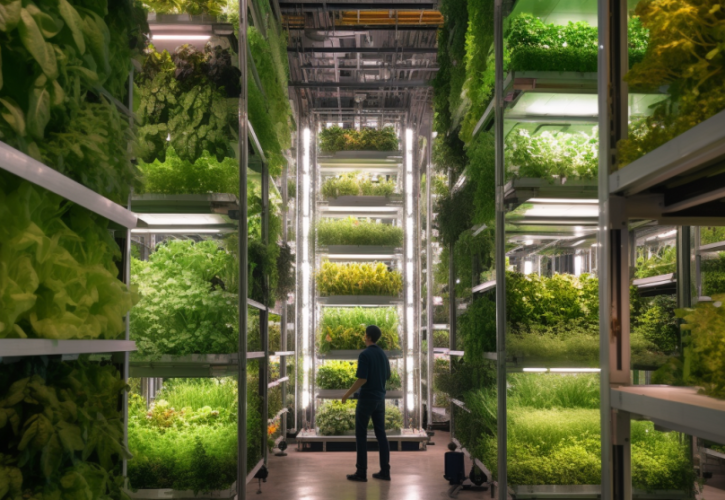 In the dynamic world of horticulture, the need for efficient equipment is paramount for achieving optimal growth and productivity. With the emergence of SecondBloom Auctions specializing in new and used horticulture equipment, accessing a wide array of options has become easier than ever before. One valuable tool in the arsenal of controlled environment agriculture (CEA), including greenhouses and indoor vertical farms, is the Gemba Walk. In this article, we will delve into the meaning, process, and examples of how a Gemba Walk can enhance operations within the realm of CEA.
In the dynamic world of horticulture, the need for efficient equipment is paramount for achieving optimal growth and productivity. With the emergence of SecondBloom Auctions specializing in new and used horticulture equipment, accessing a wide array of options has become easier than ever before. One valuable tool in the arsenal of controlled environment agriculture (CEA), including greenhouses and indoor vertical farms, is the Gemba Walk. In this article, we will delve into the meaning, process, and examples of how a Gemba Walk can enhance operations within the realm of CEA.
Understanding the Gemba Walk: The term “Gemba” is derived from Japanese and translates to “the real place” or “where the work happens.” The Gemba Walk is a lean management technique that involves physically observing and engaging with the operational processes at the ground level. It empowers managers and decision-makers to gain valuable insights by immersing themselves in the day-to-day activities, fostering a deeper understanding of the challenges and opportunities in CEA environments.
The Process of a Gemba Walk:
-
Planning: Before embarking on a Gemba Walk, it is essential to define the purpose and scope. This involves setting objectives, identifying key areas of focus, and determining the duration of the walk.
-
Preparing: Prior to the Gemba Walk, gather relevant data, reports, and documentation that will provide insights into ongoing operations. Engage with the team and communicate the purpose of the walk, ensuring everyone understands the benefits and objectives.
-
Observing: Once on the ground, spend time observing and documenting the processes involved in CEA. Pay attention to workflows, equipment usage, maintenance routines, and interactions between staff and equipment. Take note of any bottlenecks, inefficiencies, or safety concerns.
-
Engaging: Actively engage with employees and equipment vendors during the walk. Encourage open communication, ask questions, and seek feedback on the effectiveness of the equipment. Employees on the ground often possess invaluable knowledge and insights that can lead to process improvements.
-
Identifying Improvement Opportunities: Analyze the observations made during the Gemba Walk and identify areas for improvement. This could range from equipment upgrades or replacements to process optimizations. Engage with vendors on SecondBloom to explore options that align with the identified improvement areas.
Examples of Gemba Walk in Controlled Environment Agriculture:
-
Equipment Efficiency: During a Gemba Walk, it may be discovered that certain horticulture equipment is outdated or not optimized for maximum efficiency. By engaging with equipment vendors on the SecondBloom Auctions website, managers can explore modern alternatives that can improve productivity, reduce energy consumption, and enhance yield.
-
Workforce Safety: The Gemba Walk can uncover potential safety hazards in CEA environments, such as faulty equipment or inadequate safety measures. Managers can collaborate with vendors to procure safety-enhanced equipment or invest in training programs that prioritize employee well-being.
-
Process Optimization: Through observing and engaging with the workforce, managers can identify process bottlenecks or areas where manual labor can be replaced with automation. By working closely with equipment vendors, they can acquire advanced systems that streamline operations, reduce labor costs, and improve overall efficiency.
Conclusion: In the ever-evolving world of controlled environment agriculture, the Gemba Walk emerges as a powerful tool to drive improvements. By immersing themselves in the operational processes, managers gain firsthand knowledge of challenges and opportunities, ultimately leading to informed decision-making. The availability of SecondBloom Auctions makes it easier than ever to access new and used horticulture equipment that aligns with the improvement areas identified during the Gemba Walk. By embracing this lean management technique, CEA businesses can unlock their full potential.
